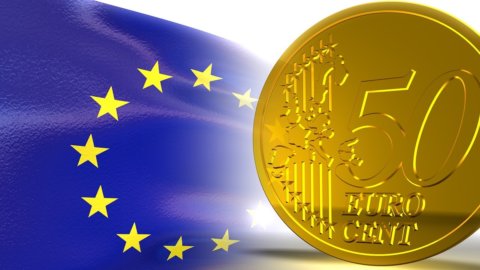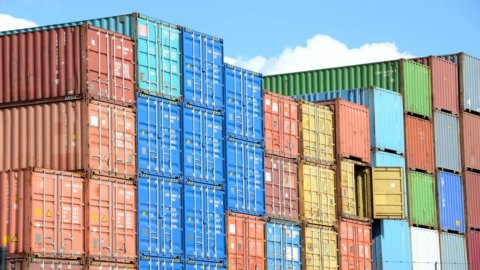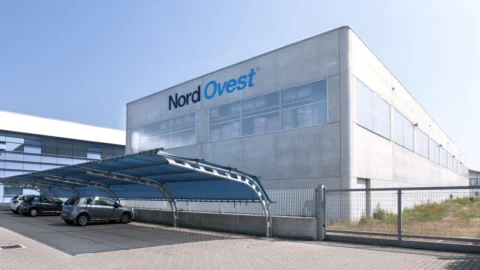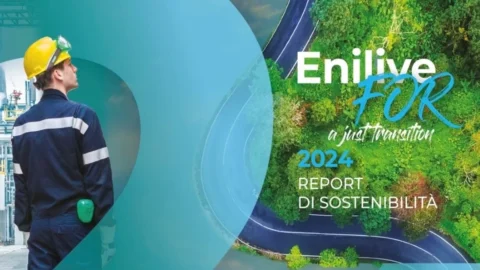Qual è lo stato di salute delle principali Multiutility italiane? Una parte del Rapporto 2017 dell’Osservatorio sulle Alleanze e le Strategie nel Mercato Pan-Europeo delle Utility di Agici Finanza di Impresa, presentato e discusso nel Convegno annuale a Palazzo Clerici – 2 marzo 2017, è dedicata a questo tema. Ecco i punti salienti.
Ricavi: tra alti e bassi con un trend negativo
I ricavi aggregati delle aziende appartenenti al cluster delle Multiutility mostrano nel periodo 2008-2018 un andamento altalenante. Dopo una leggera decrescita tra il 2008 e il 2009, si ha una ripresa sino al 2012 (circa 20 miliardi di €, + 2,285 miliardi sul 2008) a cui segue una progressiva contrazione fino al 2014 (-19,4% rispetto al 2012). L’arresto della dinamica positiva riflette, in particolare, l’andamento negativo delle vendite delle società quotate che contraggono i ricavi in modo superiore alle non quotate. Il biennio 2014-2015 mostra un nuovo miglioramento, seppur lieve (+1,51%), che sembra confermarsi nelle previsioni per il triennio 2016-2018. Le stime degli analisti delineano, infatti, un quadro di crescita, seppur graduale e contenuta, che dovrebbe portare a una complessiva stabilizzazione del fatturato negli anni.
Utile: condizionato dalle partite straordinarie
La dinamica dell’utile netto aggregato nel periodo 2008-2015 (vedi figura) è fortemente oscillante, alternando anni di significativa contrazione con periodi di rilevante crescita. La negatività del risultato del 2009 (utile netto aggregato pari a 127 milioni di €, -82,3% rispetto al 2008) trova giustificazione negli effetti della crisi, mentre la contrazione del 2011 (utile netto aggregato pari a –336 milioni di €) è legata alle perdite di A2A e Iren. Queste due società, in effetti, hanno condizionato i risultati del campione poiché a
loro è attribuibile sia gran parte delle perdite del 2011 e del 2013, sia la crescita del 2012.
Tra il 2014 e il 2015 tutte le Multiutility, quotate e non quotate, hanno accresciuto il loro reddito netto. Gli analisti, per il triennio 2016-2018, si attendono una forte crescita dell’utile netto aggregato che passa da 560,6 milioni di € nel 2015 a 977 milioni di € nel 2018. Ma il balzo dovrebbe già avvenire nel 2016 sulla base delle proiezioni degli analisti.
Ci si attende, in particolare, una performance molto elevata di A2A, società che più delle altre, negli ultimi anni, ha subìto contrazioni dei risultati imputabili a componenti straordinarie.
Le Multiutility leader in Italia: performance in miglioramento
Già l’analisi dei risultati delle singole Multiutility al 30 settembre 2016 mette in luce le cause della forte salita dell’utile aggregato in tutto il 2016. Si rileva una complessiva crescita della marginalità imputabile alla superiore efficienza operativa, a un maggiore sfruttamento delle sinergie oltre che alle operazioni di crescita esterna.
• A2A accresce l’utile netto per 86 milioni € (+36% rispetto al 30 settembre 2015 pari a 323 milioni di euro) grazie ai positivi risultati operativi (MOL pari a 872 milioni €) per la scissione parziale non proporzionale di Edipower a favore di Cellina Energy S.r.l., per le positive performance industriali delle principali business unit in termini di aumento del MOL e per le efficienze sui costi. Il risultato del 2016 beneficia anche di maggiori partite non ricorrenti per 13 milioni di euro e del contributo derivante dal consolidamento
per i mesi di agosto e settembre 2016 della Business Unit Generazione e Trading del Gruppo LGH.
• Iren ha un utile netto di 124,9 milioni di euro (+26,3% rispetto ai 98,8 milioni del settembre 2015). Tale crescita appare connessa alle iniziative di efficientamento legate al processo di performance improvement, lanciato nel 2015 e rafforzato col piano industriale 2016-2021. Ci si riferisce all’ottimizzazione delle strategie di approvvigionamento, di trading e di commercializzazione e anche a una gestione più flessibile degli impianti cogenerativi nella produzione elettrica e di calore. L’aumento del reddito netto è legata anche alla rettifica del valore della partecipazione in TRM, conseguente all’acquisizione della quota di controllo della società.
• Hera registra, al termine del terzo trimestre 2016, un utile netto pari a 142,2 milioni € (+13,8% sul settembre 2016) imputabile al maggior MOL (+1,6%). Ciò, per i benefici dalle acquisizioni nei settori a libero mercato, dalla crescita dell’area energia elettrica e ambiente (con un incremento soprattutto nel corso del terzo semestre).
• Infine, per Acea la crescita dell’utile al 30 settembre 2016 è di € 64,3 milioni (+ 47,1%). Essa deriva dal maggior Ebitda (da 530,9 milioni € del 2015 a 646,1 milioni € nel 2016) grazie alle dinamiche tariffarie del settore idrico (+ € 31,7 milioni), oltre che al positivo risultato della gestione finanziaria (+8,6% rispetto allo stesso periodo del 2015).
Posizione debitoria: verso un riequilibrio
In ultimo, un cenno alla Posizione Finanziaria Netta aggregata. Nel Rapporto del 20141, introducendo l’analisi dei principali dati economico-finanziari per le Multiutility, titolavamo: “Un settore stabile con l’esigenza di ridurre il debito”. Oggi, a tre anni di distanza, le aziende si sono mosse in questa direzione per il terzo anno consecutivo, soddisfacendo l’auspicata inversione di tendenza (PFN nel 2015 di 10.265 milioni di € e attesa nel 2016 a 8,3 miliardi di euro, valore di poco inferiore al 2012).
Le proiezioni per gli anni 2016-2018 delle società quotate delineano un quadro stabile o in leggero miglioramento. Dopo la diminuzione della PFN nel 2016, segue un aumento nel 2017 e nel 2018 (valore atteso PFN 2018 pari a 10,2 miliardi di€); nonostante ciò, ci si attende che la stimata crescita della posizione debitoria nel 2017 e 2018 si stabilizzi, in linea con quella registrata nel 2015 (PFN 2018 inferiore a PFN 2015 di 93 milioni euro).
Scendendo nel dettaglio delle singole società si nota come il dato aggregato sia condizionato da Iren che dovrebbe, infatti, prima accrescere in modo marcato la sua posizione debitoria (da 489 milioni di € nel 2016 a 2,432 miliardi di € nel 2017), per poi ridurla significativamente nel 2020 e nel 2021. Le stime sulla posizione debitoria di A2A prevedono, dopo una crescita della PFN tra il 2015 e il 2016, un importante calo nel triennio successivo (-200 milioni di € circa tra 2016 e 2018) legato a una politica di maggiori investimenti e alla superiore erogazione di dividendi. Relativamente a Hera e ACEA, si rileva l’aumento della loro PFN: tra il 2016 e il 2018 Hera dovrebbe accrescere la posizione debitoria di circa 100 milioni di €, mentre ACEA di 150 milioni di €.
Per una conferma del management
Il quadro che emerge appare nel complesso positivo se ci si rapporta ai grandi timori del dopo-crisi del 2008-2009. Le imprese stanno affrontando con determinazione i forti processi di cambiamento nel settore avendo anche provveduto:
a) a razionalizzazioni organizzative (che invero potrebbero essere anche non finite), b) allo sfruttamento delle economie di scala derivanti da precedenti operazioni di M&A, c) al ricorso al mercato del debito sfruttando le favorevoli condizioni sul lato del costo del finanziamento, d) alla messa in pista di importanti progetti sul lato innovazione – in particolare digitalizzazione – con i primi risultati che si iniziano a toccare con mano.
D’altro lato, le prospettive appaiono comunque incerte a causa dei continui cambiamenti che le nuove tecnologie stanno portando al mercato. Tuttavia, le aziende hanno tracciato delle linee di sviluppo abbastanza chiare e definite, talvolta prudenti e perciò con qualche upside implicito.
In conclusione, noi crediamo che il management che ha operato in questi difficili anni abbia fatto nel complesso bene
(molto bene in alcuni casi) e riteniamo che, al di là degli aspetti politici legati alle nomine da qui a pochi mesi, sia estremamente importante dare un altro triennio per proseguire nel lavoro. Cambiare direzione potrebbe interrompere un lavoro complesso che comunque non è concluso.





